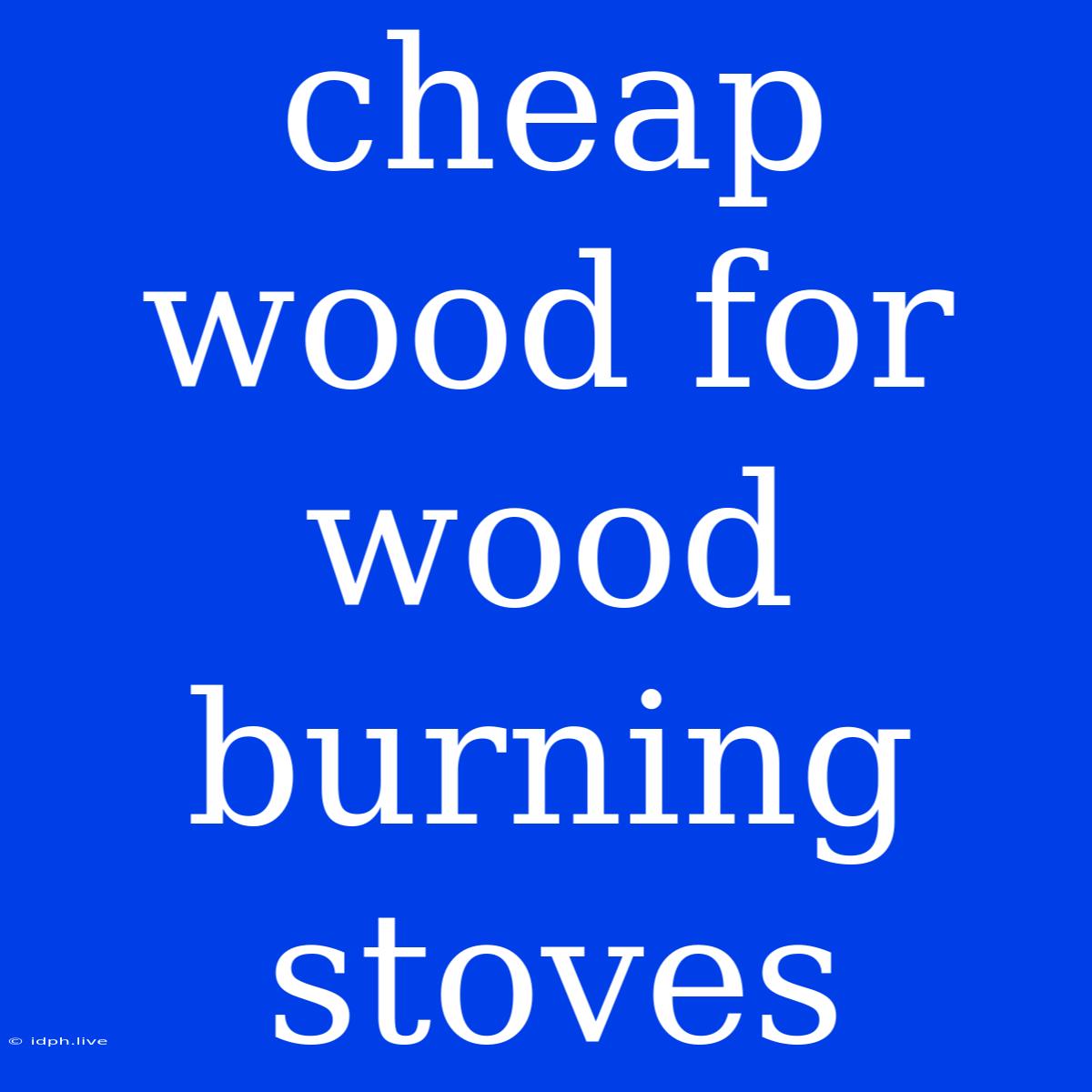Cheap Wood for Wood Burning Stoves: A Guide to Affordable Heat
A wood-burning stove can be a fantastic way to heat your home and save money on energy bills, but choosing the right kind of wood can make a huge difference in both your wallet and your stove's efficiency. While seasoned hardwood is often considered the gold standard, there are many cheap wood options that can still provide you with a warm, cozy fire.
Here's a breakdown of affordable wood types, their pros and cons, and tips for getting the most out of your burning experience:
Softwoods:
- Pine: Easily accessible and often the cheapest option, pine burns quickly with a hot, bright flame. However, it produces a lot of creosote buildup, requiring more frequent stove cleaning.
- Spruce: Similar to pine, spruce is another fast-burning, readily available softwood, but it tends to produce more sparks than other options.
- Fir: Fir offers a moderate burn time and a pleasant aroma, but it's not as readily available as pine and spruce.
Hardwoods:
- Poplar: While it's considered a hardwood, poplar is relatively soft and burns quickly. It's an excellent choice for starting fires or as a kindling source.
- Aspen: Aspen is another soft hardwood that burns quickly and produces a bright flame. It's often readily available in areas with aspen forests.
- Willow: Willow is known for its fast burn and good heat output, making it a decent option for occasional use. However, it produces significant ash.
Tips for Choosing and Using Cheap Wood:
- Seasoning: Regardless of the wood type, ensure it's properly seasoned (dried for at least 6 months) before burning. This will maximize burn time and minimize smoke.
- Mix and Match: Combine cheaper softwoods with some hardwood for a balanced burn. This can help slow down the burning process and reduce creosote buildup.
- Kindling: Use kindling to start the fire effectively. Use small pieces of easily ignitable material like dry twigs or paper to get the flames going.
- Fire Management: Don't overload the stove with wood. Allow for proper air flow and control the flame intensity for optimal burning.
Where to Find Cheap Wood:
- Local Tree Services: Often, tree services will offer discounted or free wood after tree trimming or removal.
- Wood Yards and Sawmills: Check out local wood yards or sawmills for reduced prices on smaller pieces of wood or scrap wood.
- Craigslist and Facebook Marketplace: You can find free or affordable wood through online classifieds.
- Forest Service Permits: In some areas, you can obtain permits to gather firewood from national forests for a small fee.
Remember:
- Always follow your wood-burning stove manufacturer's instructions for the best results.
- Invest in a good chimney sweep to ensure safe and efficient burning.
- Be aware of local air quality regulations and follow them responsibly.
Choosing the right wood for your wood-burning stove can be a balancing act between affordability and performance. By considering these options and following these tips, you can enjoy the warmth and cost savings of a wood-burning stove without breaking the bank.

